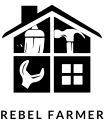Early learning and development program resources for all children, birth to age eight, especially those in highest need. Through the stories of Ahmed, Temesgen and Asiya, three students from Afar, read how a GPE-funded program is transforming the education and lives of children in Ethiopia. Our newsletters provide the latest information on education news and events, as well as details of resources and activities to help you support your child’s learning. COVID-19 Information for schools, early learning services, tertiary providers, parents and whānau. Looking for cool projects that can engage students at home and support academic learning at the same time?
- The Agenda includes 17 Sustainable Development Goals , including SDG 4 on education.
- This usually means that there is no distinction between activities focused on education and other activities.
- October 22, 2022 • Nearly 22 million people — more than half of qualifying borrowers — have signed up.
- A broad range of educational approaches emerged, including alternative schools, self learning, homeschooling, and unschooling.
Nonformal education occurs as addition or alternative to formal education. It may be structured according to educational arrangements, but in a more flexible manner, and usually takes place in community-based, workplace-based or civil society-based settings. Lastly, informal education occurs in daily life, in the family, any experience that has a formative effect on the way one thinks, feels, or acts may be considered educational, whether unintentional or intentional. In practice there is a continuum from the highly formalized to the highly informalized, and informal learning can occur in all three settings. For instance, homeschooling can be classified as nonformal or informal, depending upon the structure. Formal education occurs in a structured environment whose explicit purpose is teaching students.
Natural Disaster Support
If learners have a personal interest in what they are informally being taught, learners tend to expand their existing knowledge and conceive new ideas about the topic being learned. For example, a museum is traditionally considered an informal learning environment, as there is room for free choice, a diverse and potentially non-standardized range of topics, flexible structures, socially rich interaction, and no externally imposed assessments. In the past, those who were disabled were often not eligible for public Education News. Children with disabilities were repeatedly denied an education by physicians or special tutors.
Higher Education
In Africa, the New Partnership for Africa’s Development has launched an “e-school program” to provide all 600,000 primary and high schools with computer equipment, learning materials and internet access within 10 years. An International Development Agency project called nabuur.com, started with the support of former American President Bill Clinton, uses the Internet to allow co-operation by individuals on issues of social development. While informal learning often takes place outside educational establishments and does not follow a specified curriculum, it can also occur within educational settings and even during formal learning situations. Educators can structure their lessons to directly utilize their students informal learning skills within the education setting. Programs at ISCED level 3, or upper secondary education, are typically designed to complete the secondary education process.
Globally, in 2008, around 89% of children aged six to twelve were enrolled in primary education, and this proportion was rising. Under the Education For All programs driven by UNESCO, most countries have committed to achieving universal enrollment in primary education by 2015, and in many countries, it is compulsory. The division between primary and secondary education is quite arbitrary, but it generally occurs at about eleven or twelve years of age. Some education systems have separate middle schools, with the transition to the final stage of secondary education taking place at around the age of fifteen. Schools that provide primary education, are mostly referred to as primary schools or elementary schools. Primary schools are often subdivided into infant schools and junior schools.
